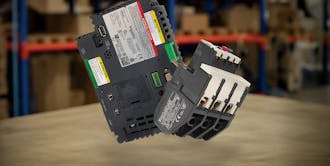What’s in store for industrial automation in 2024?
January 25, 2024
As another year comes and goes, we continue to find ourselves surrounded by a rapidly changing industrial automation landscape. The promise of a manufacturing utopia in Industry 4.0 appears to be within reach, thanks to advancements in technology. Smart factories, supply chain digitalisation, and generative AI are now more viable than ever before. However, for the everyday automation professional, their main focus will be on the daily operations of their facilities. They will also pay close attention to industry factors that may lead to potential disruptions.
What to expect from industrial automation in 2024
Approaching the new year with a clear understanding of the opportunities and challenges that lie ahead is crucial. Moreover, we must consider ambitious goals, such as supply chain digitalisation and smart factories. Let’s explore a handful of relevant updates that will certainly make the first few months of 2024 easier to navigate. Although, these may not necessarily transform the automation industry as we know it.
Supply chains and lead times in 2024
Since the global COVID-19 outbreak, supply chains have been struggling to regain their prepandemic stability. Although there are signs of recent stabilisation, manufacturers are not out of the woods yet.
According to a recent study by Deloitte, the delivery time for production materials remains far greater than pre-pandemic levels. This results in a 37% increase on average. As expected, the lack of electrical, computer, and semiconductor parts is the main reason for these delays.
If you're looking for critical components and want to avoid long lead times, speak to an account manager at EU Automation. We can provide you with further information and spare parts.
End-of-life products for industrial automation in 2024
Advancements in technology in industrial automation lead to obsolescence. Even product ranges that are commonly used throughout the entire manufacturing industry are not safe from the inevitability of obsolescence.
Over the past few years, there has been a distinct trend of discontinuing popular products. Some examples include the Siemens Micromaster, various SICK photoelectric sensor ranges. Such as the W14-2, W18-3, W23-2, and W27-3 families. As well as both the Danfoss VLT5000 and VLT2800 inverters.
As always, there are commonly used product ranges scheduled for obsolescence - or limited manufacturer support - during 2024. Some of these include:
- Siemens SIMATIC ET 200S
- ABB ACS600 MultiDrive
- ABB Tmax T5-T6-T7
If you need to source obsolete or soon-to-be obsolete industrial parts, explore our part inventory today.
Schneider and Telemecanique in 2024
Since their buy-out in 2023 by Yageo Corporation, there has been a notable uplift in demand for the Telemecanique components. Additionally, EU Automation has seen a corresponding 35% increase in enquiries for Schneider components.
The acquisition has undeniably prompted a greater demand for Schneider and Telemecanique components. It remains uncertain how this takeover will further impact the broader market.
EU Automation is strategically positioned to meet this demand, ensuring our customers receive in-demand components with record lead times. Read more about Yageo's acquisition of Telemecanique Sensors in our dedicated article.
The big picture
If you’re interested in learning more about larger industry transformations mentioned earlier then head on over to our Knowledge Hub. There, you’ll find a wide range of resources on those topics and many more. Including, details on all things industrial automation, such as, smart factories, supply chain digitalisation and generative AI.










